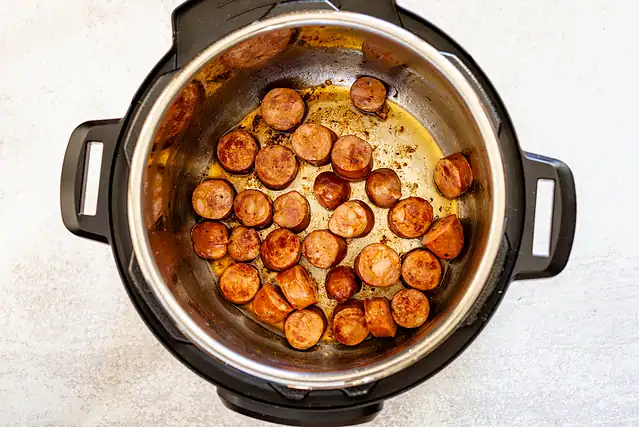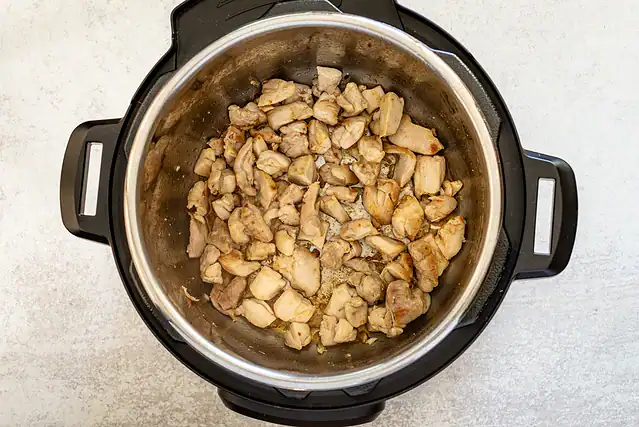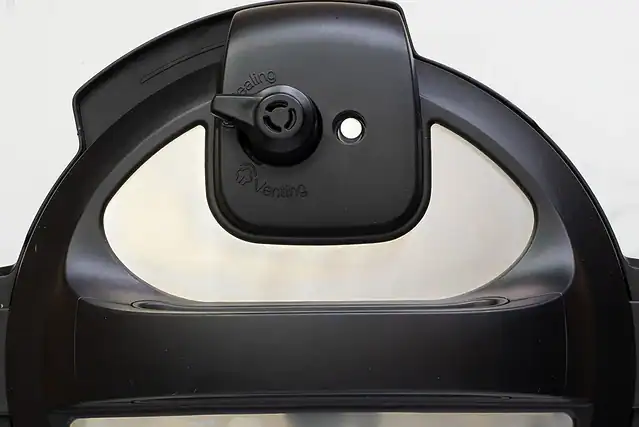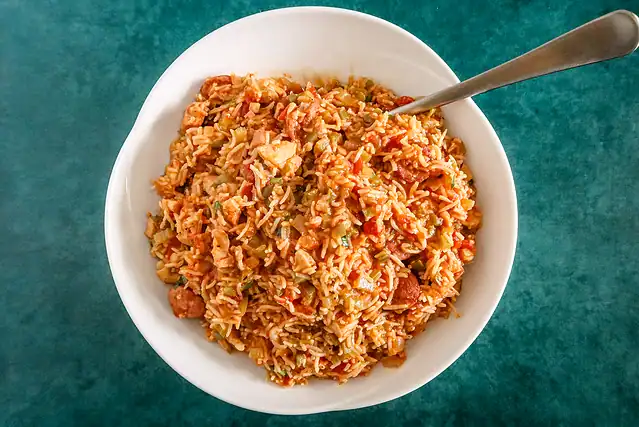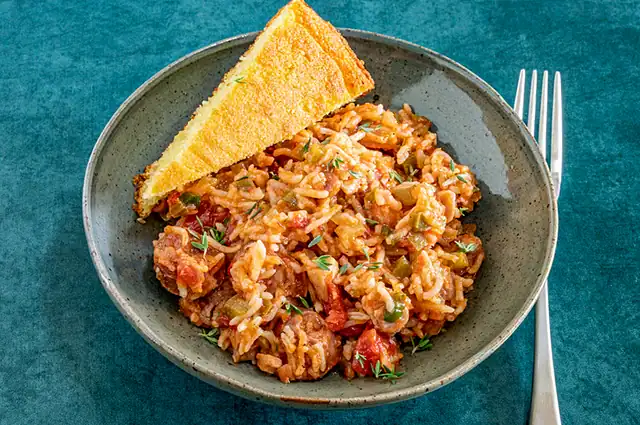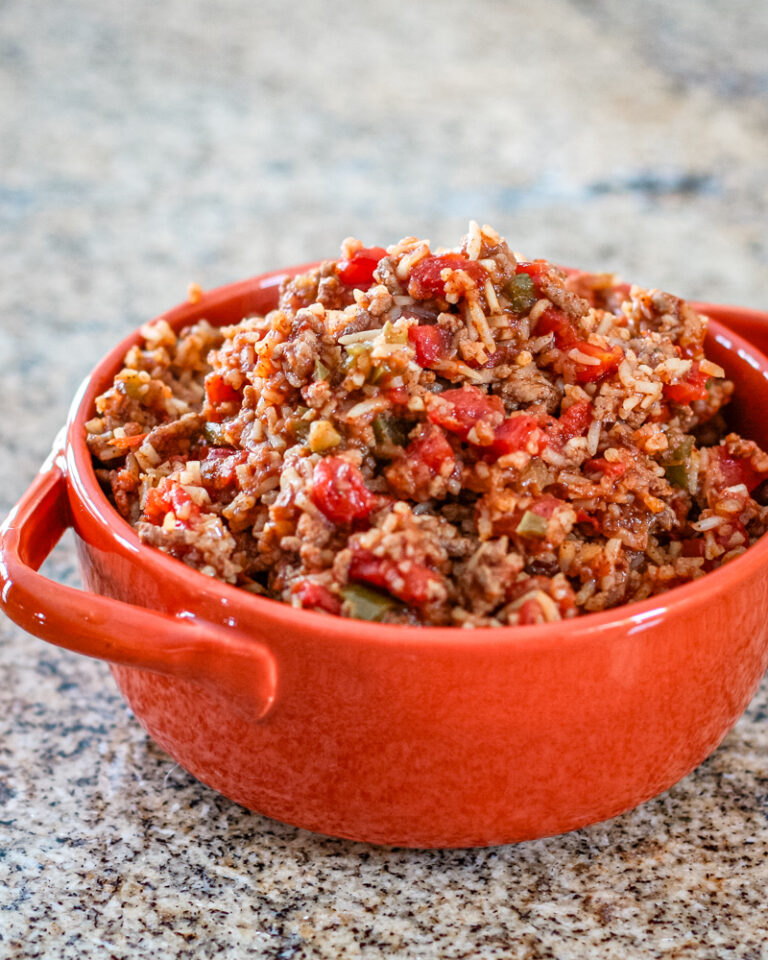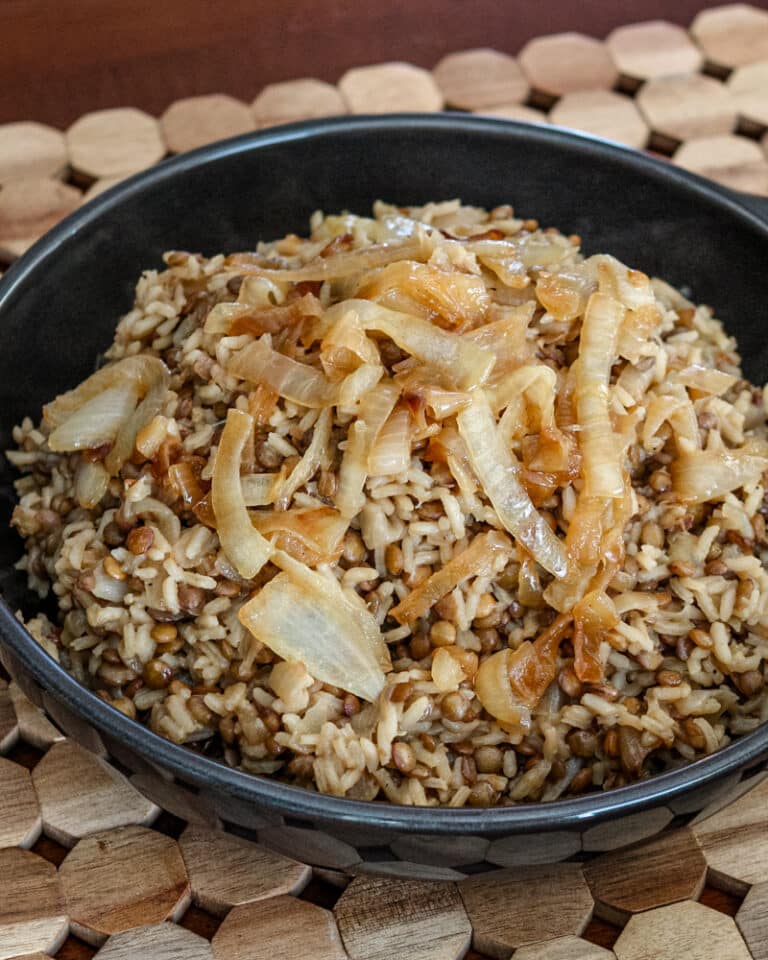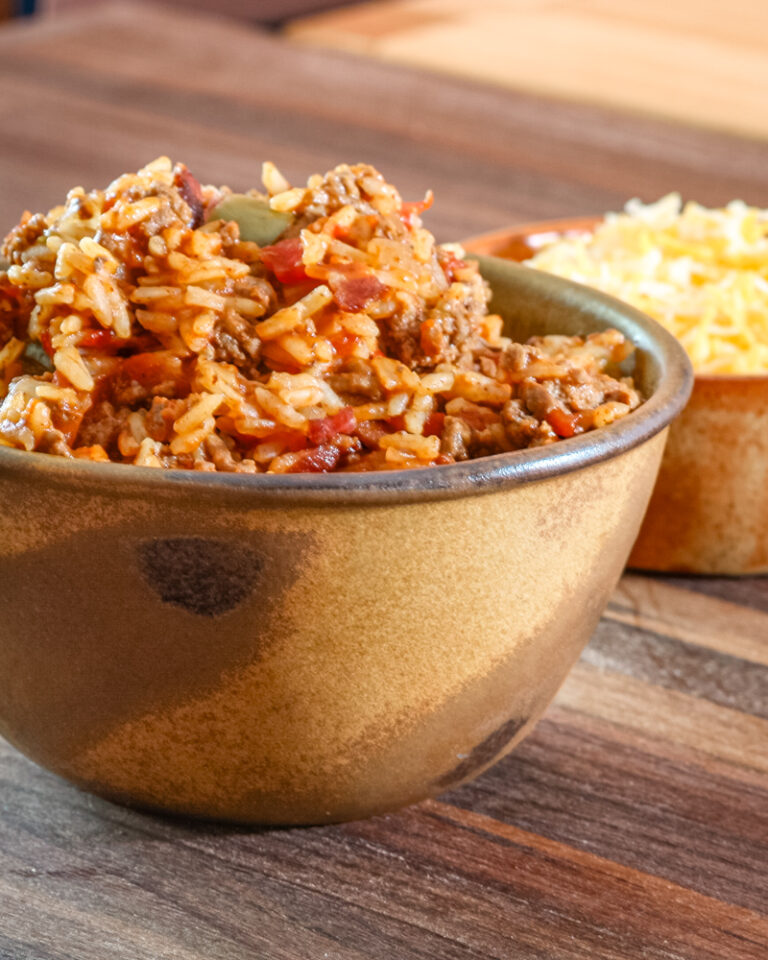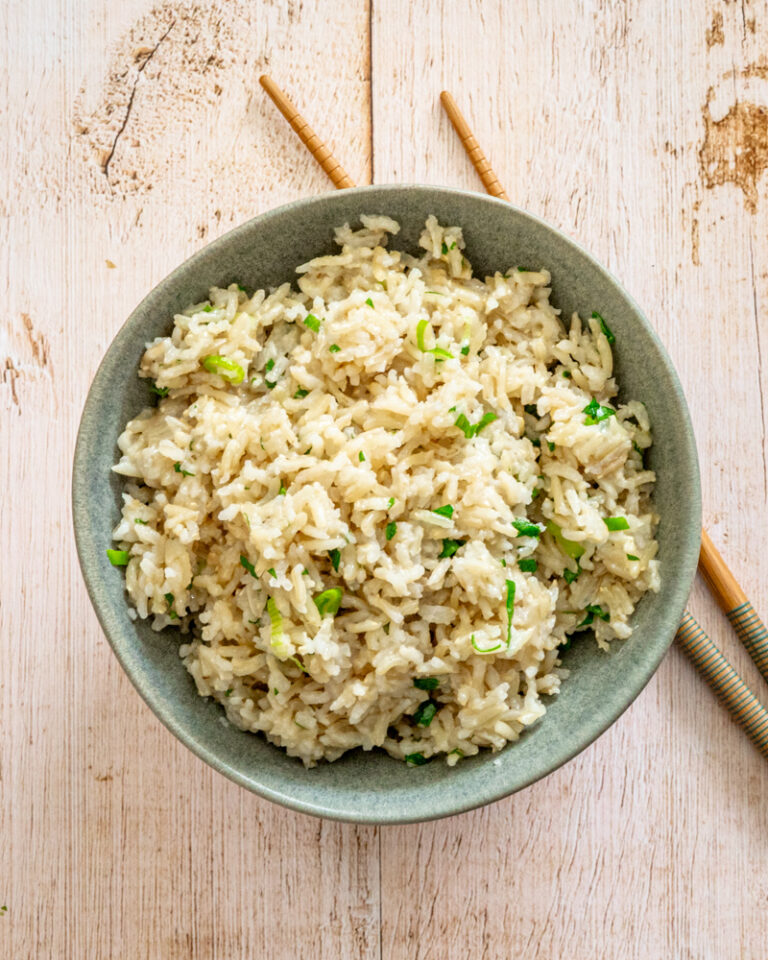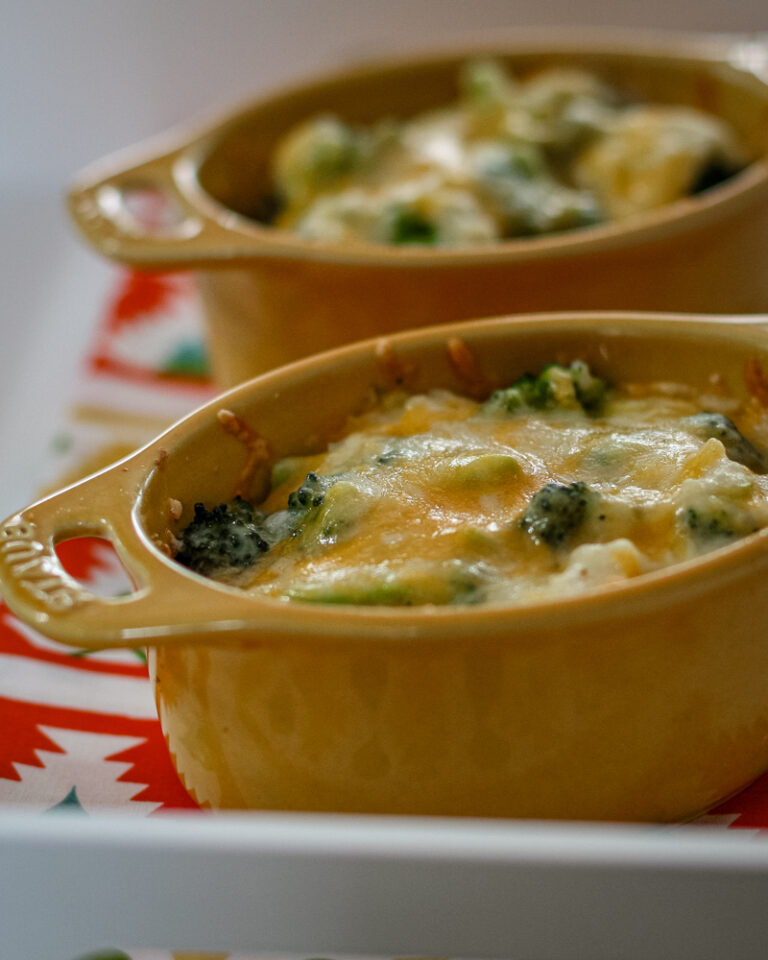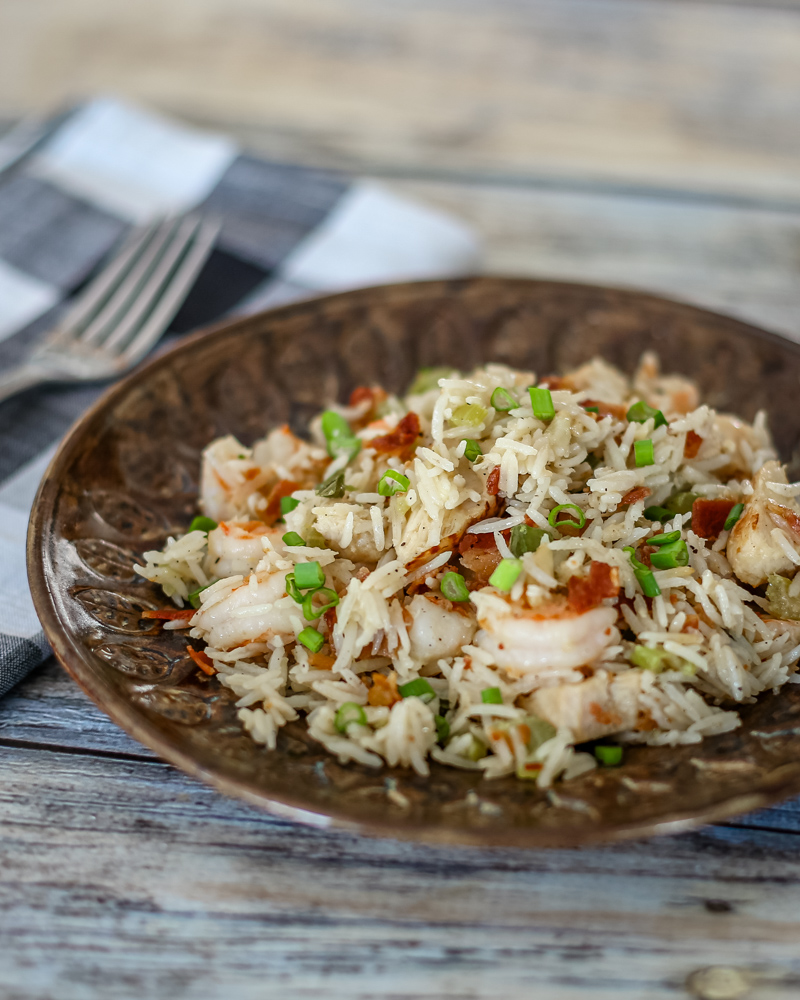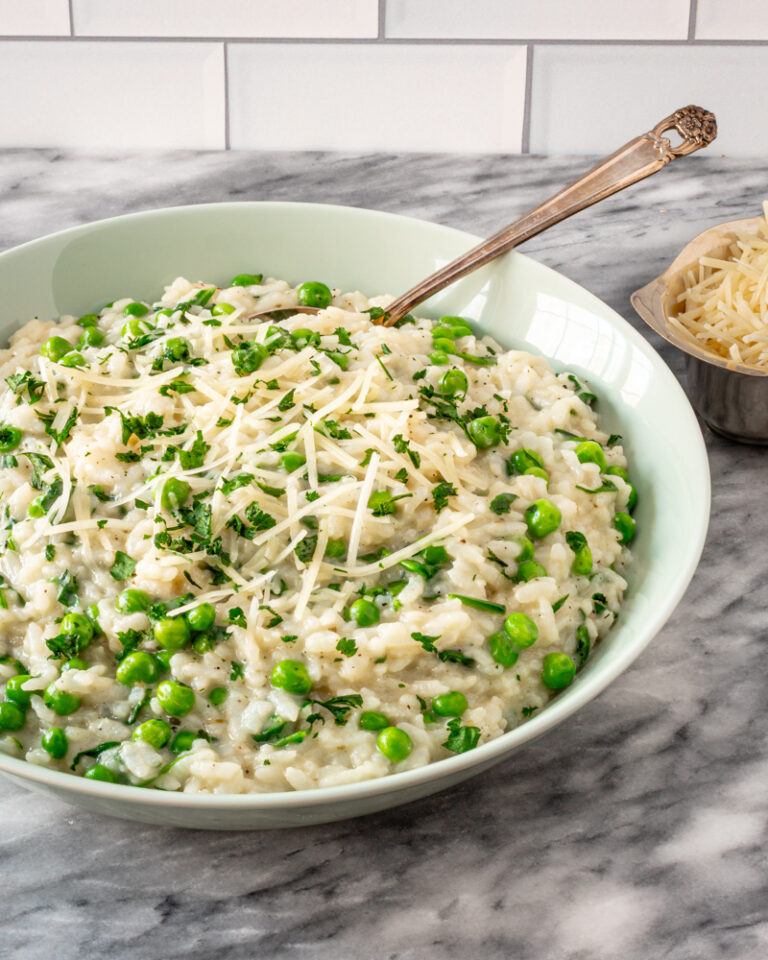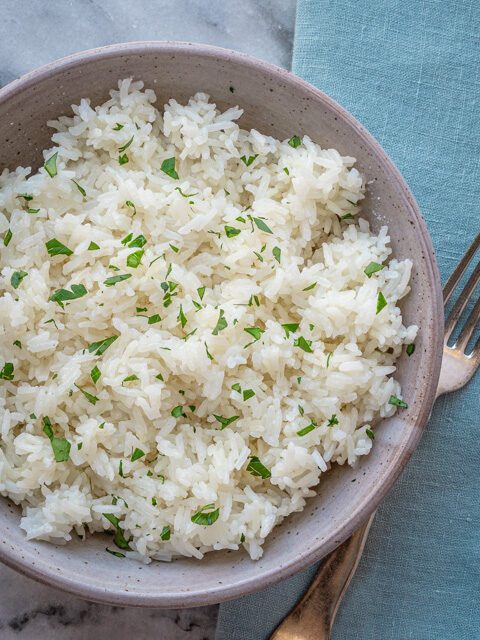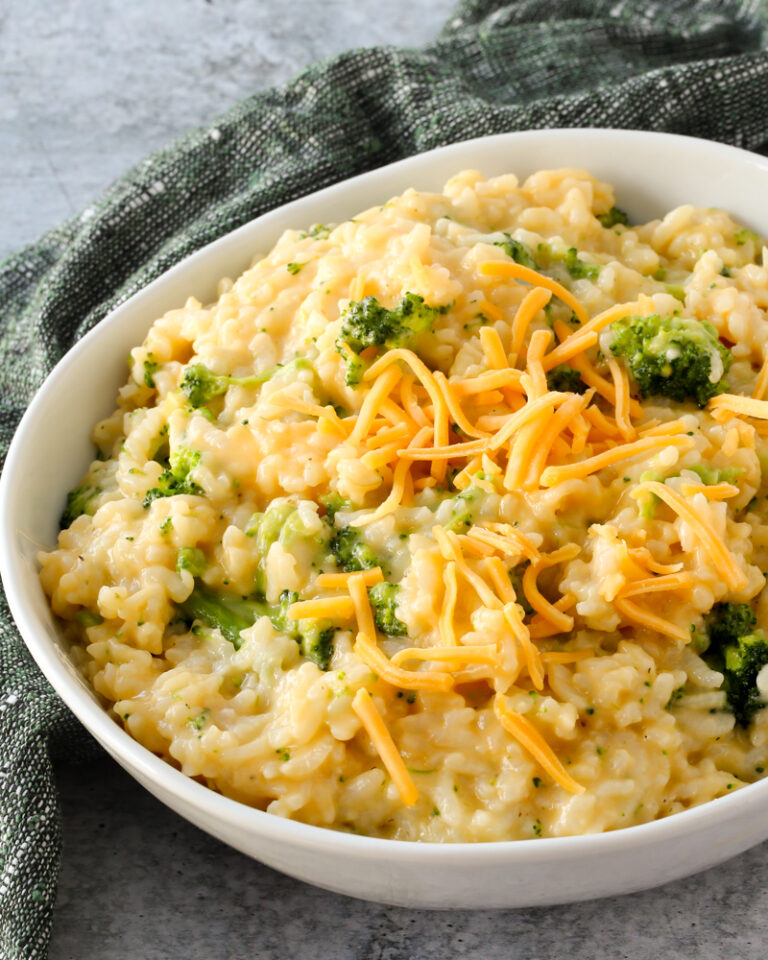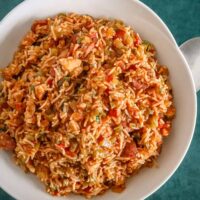Instant Pot Jambalaya
Instant Pot jambalaya is packed with flavor! Your friends and family will love this Southern classic!
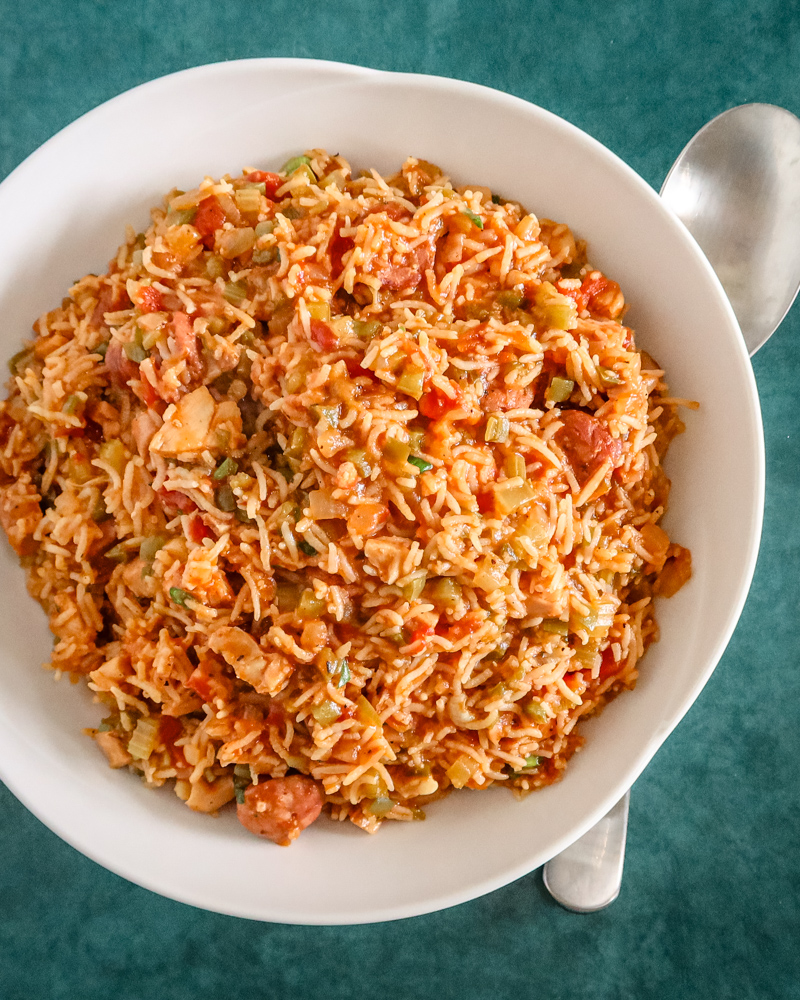
Instant Pot jambalaya brings all the flavors of a classic Cajun-Creole dish together with far less effort. The pressure cooker helps the rice absorb the smoky sausage, savory chicken, aromatic vegetables, and spices while keeping everything tender and perfectly seasoned.
This version uses the classic “holy trinity” of onion, bell pepper, and celery, along with sausage, chicken, tomatoes, and warm spices. It’s hearty enough for weeknight meals, comforting enough for gatherings, and endlessly adaptable depending on whether you add shrimp or keep it chicken-and-sausage only.
Jambalaya History
Creole jambalaya evolved from the rich cultural tapestry of Louisiana, particularly in New Orleans. Spanish, French, African, and Caribbean influences began blending in the 18th century, shaping what we now know as the region’s signature cuisine. The word “jambalaya” likely comes from “jambon,” the French word for ham, and “aya,” an African word for rice. Others point to Spanish paella as the original inspiration.
Creole Jambalaya vs. Cajun Jambalaya
This Creole-style jambalaya differs from Cajun jambalaya in a few ways. While both versions utilize the “holy trinity” of sautéed onions, bell peppers, and celery, along with a combination of proteins, Creole jambalaya also incorporates tomatoes. Cajun Jambalaya, on the other hand, does not contain tomatoes.
What You’ll Like About This Dish
Big flavor, minimal effort. The Instant Pot builds deep flavor without constant stirring or watching the pot.
One-pot convenience. Protein, vegetables, and rice all cook together for an easy cleanup.
Flexible protein options. Add shrimp, use more chicken, or change the sausage style.
Perfect texture. The rice cooks evenly and absorbs all the rich, seasoned juices.
Ingredient Notes
- Andouille sausage – Adds smoky, spicy flavor; any fully cooked Cajun-style sausage works.
- Chicken thighs – Stay tender during pressure cooking; thighs work best, but breasts can be used.
- Shrimp – Optional, but adds a classic seafood twist; stir in after cooking if desired.
- Holy trinity vegetables – Onion, celery, and bell pepper are essential for authentic flavor.
- Creole seasoning – Use your favorite blend; adjust the salt depending on the brand.
- Long-grain white rice – Holds up well and stays fluffy; be sure to rinse.
- Diced tomatoes – Add moisture and acidity without overpowering the dish.
- Worcestershire sauce – Adds savory depth.
Steps to Make Instant Pot Jambalaya
- Brown the sliced sausage in oil using the sauté setting.
- Remove the sausage and sauté the chicken pieces until lightly browned.
- Add the onion, bell pepper, and celery and cook until softened.
- Stir in the garlic and seasonings to bloom the spices.
- Deglaze with chicken stock, scraping up the browned bits.
- Return the sausage and chicken to the pot.
- Add the rice without stirring, then spoon tomatoes on top.
- Seal and pressure cook until the rice is tender.
- Allow a brief natural release, then open and fluff.
- Stir in green onions and adjust salt to taste.
Tips
- Do not stir the rice after adding it—this prevents sticking and helps the rice cook evenly.
- Add shrimp after cooking by stirring them in and letting the residual heat cook them.
- Use low-sodium stock if your Creole seasoning is salty.
- Garnish with fresh herbs for brightness and color.
Recipe Variations
- Seafood jambalaya. Add shrimp, crawfish, or scallops after cooking and let them steam in the residual heat.
- Spicy version. Add cayenne, hot sauce, or extra Creole seasoning.
- Tomato-free version. Omit the diced tomatoes for a more Cajun-style dish.
- Smoky version. Add smoked paprika or use a heavily smoked sausage.
- Vegetable-forward. Stir in peas, okra, or extra bell peppers after cooking.
Serving Suggestions
- Serve with crusty bread or cornbread.
- Pair with a simple green salad.
- Add hot sauce on the side for extra heat.
- Top with fresh parsley or thyme.
- Garnish with extra green onions.
How to Store
Refrigerate: Store leftover jambalaya in an airtight container for up to 4 days. The flavors deepen as it rests.
Freeze: Freeze in portions for up to 2 months. The rice will soften slightly but reheats well.
Reheat: Warm on the stovetop or in the microwave, adding a splash of chicken stock if the rice is too thick.

Instant Pot Jambalaya
Ingredients
- 2 tablespoons vegetable oil
- 12 ounces andouille sausage, sliced (I use Aidells)
- 12 ounces chicken thighs, boneless, cut into bite-sized pieces
- 8 ounces shrimp, medium to large , optional
- 1 1/2 cups diced onion
- 1 cup diced green bell pepper
- 1 cup diced celery
- 4 cloves garlic, minced
- 2 teaspoons Creole seasoning
- 1/4 teaspoon ground black pepper
- 1 1/4 cups chicken stock
- 2 teaspoons Worcestershire sauce
- 1 cup long grain rice, well rinsed
- 1 14.5-ounce can tomatoes, diced, undrained
- Salt, to taste
- Optional: sliced green onions, thyme leaves, or parsley, for garnish
Instructions
- Sauté the Sausage: Select the Instant Pot sauté function and add 1 tablespoon of vegetable oil. When the oil is hot but not smoking, add the sliced sausage. Cook for about 3 to 4 minutes, stirring frequently, until lightly browned on both sides. Remove the sausage to a plate and set aside.
- Sauté the Chicken: Add the remaining tablespoon of oil to the pot. Add the chicken pieces and cook for 4 to 5 minutes, stirring occasionally, until lightly browned. Transfer the sausage to the plate. Cook the Vegetables and Aromatics: Add the onion, bell pepper, and celery to the pot. Sauté for about 5 minutes, stirring frequently, until the onion is translucent. Stir in the garlic, Creole seasoning, and black pepper. Cook for 2 more minutes, stirring often.
- Deglaze, Add Remaining Ingredients, and Pressure Cook: Pour in the chicken stock and scrape up any browned bits from the bottom of the pot. Return the sausage and chicken to the pot. Add the rice, pressing it gently into the liquid without stirring. Spoon the tomatoes with their juices on top—do not stir. Lock the lid in place, choose pressure cook, and set the time for 7 minutes. When the time is up, let the pressure come down naturally for 5 minutes and then do a quick release.
- Finish the Dish: Taste and add salt, as needed, then stir in the green onions.
- Serve: Spoon the jambalaya into bowls or a serving dish and garnish with chopped parsley, fresh thyme leaves, or sliced green onion tops. Enjoy!
Nutrition
Disclaimer:
Our nutritional information is based on a third-party application that analyzes the ingredients list to determine the values. The information is meant to be helpful, but should be considered an estimate. Values may differ depending on measurements, brands, serving variations, and database availability.

